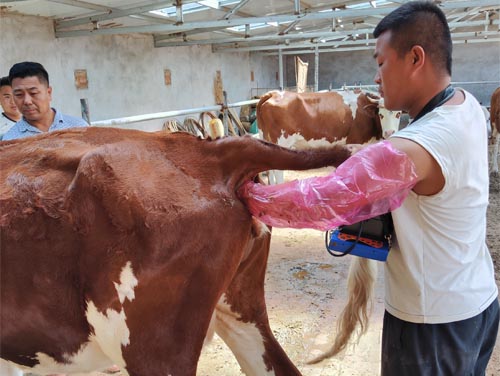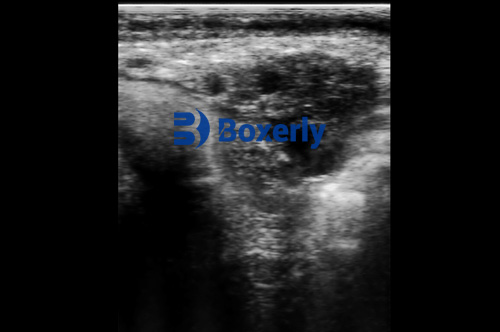Early pregnancy detection in dairy cattle plays a vital role in maximizing reproductive efficiency, reducing economic losses, and optimizing herd management. Among the advanced diagnostic tools available, veterinary ultrasound technology has become a cornerstone for accurate and timely pregnancy evaluation. This article explores how veterinary ultrasound tech assesses early pregnancy detection accuracy in dairy cattle, highlights key benefits and challenges, and integrates foreign research insights to provide a comprehensive understanding for livestock farmers and veterinary professionals worldwide.

Understanding Early Pregnancy Detection in Dairy Cattle
In dairy production systems, identifying pregnancy status promptly after insemination is crucial for improving calving intervals and herd fertility. Early detection allows farmers to quickly rebreed non-pregnant cows, minimizing unproductive days and enhancing overall herd performance.
Traditionally, pregnancy diagnosis relied on rectal palpation or hormonal assays, methods that, while useful, present limitations in terms of sensitivity, timing, and practicality. Veterinary ultrasound technology, especially transrectal B-mode ultrasonography, has emerged as a superior, non-invasive technique for confirming pregnancy as early as 25-30 days post-insemination, sometimes even earlier.
The Role of Veterinary Ultrasound in Pregnancy Diagnosis
Ultrasound uses high-frequency sound waves to produce real-time images of the cow’s reproductive tract. By inserting a specialized ultrasound probe rectally, veterinarians and trained technicians can visualize the uterus, identify embryonic vesicles, and assess fetal viability.
Key parameters examined during early pregnancy ultrasound include:
Presence of an embryonic vesicle
Detection of the embryo and heartbeat
Uterine horn and corpus luteum evaluation
Studies from North America and Europe demonstrate that veterinary ultrasound can achieve pregnancy detection accuracy rates exceeding 90% when performed by experienced operators around 28-35 days post-insemination. This accuracy is significantly higher compared to manual palpation at similar timeframes.

Comparing Veterinary Ultrasound with Other Methods
Rectal Palpation
Rectal palpation, though widely used due to its low cost and simplicity, often only reliably confirms pregnancy after 35-40 days post-breeding. Early palpation risks false positives or negatives because the embryo and associated structures may be too small to detect accurately.
Hormonal Assays
Progesterone assays and pregnancy-associated glycoproteins (PAG) tests offer non-invasive alternatives but may lack specificity or timely results. Progesterone indicates luteal activity rather than pregnancy per se, while PAG tests provide accurate results around 28 days but require laboratory processing.
Advantages of Veterinary Ultrasound
Ultrasound provides direct visualization of pregnancy structures, enabling earlier, more reliable diagnosis. Additionally, it offers real-time information on fetal viability and can detect abnormalities such as embryonic loss or uterine infections.
Factors Affecting Accuracy of Early Pregnancy Ultrasound
Several variables influence the precision of early pregnancy detection using ultrasound in dairy cattle:
Operator Skill
Experienced operators achieve higher accuracy by better interpreting subtle images and avoiding false diagnoses. Training and repeated practice are essential to master probe manipulation and image reading.
Timing of Examination
Performing ultrasound too early (before day 25) may result in missed pregnancies, while late scanning delays corrective herd management actions. Most studies recommend 28-35 days post-insemination as the optimal window for balance between early detection and reliability.
Equipment Quality
High-resolution ultrasound machines with appropriate probes improve image clarity, allowing better visualization of small embryonic structures. Portable devices designed specifically for veterinary use facilitate fieldwork.
Animal Factors
Cow parity, uterine size, and presence of twins can impact image interpretation. Some cows may have uterine infections or cysts that complicate diagnosis.

International Perspectives and Research Findings
Europe
European research emphasizes the economic benefits of early pregnancy diagnosis using ultrasound in large-scale dairy operations. A study in the Netherlands demonstrated that early ultrasound-based detection reduced calving intervals by an average of 10 days, translating into improved milk yield and profitability. Moreover, European veterinarians often integrate ultrasound with reproductive management software to track herd fertility data in real time.
North America
In the US and Canada, ultrasound technology is a standard practice on many commercial dairy farms. Research published by the University of Wisconsin shows that ultrasound-based early pregnancy detection reduced open days by 15%, decreasing insemination costs and improving herd genetic progress through better selection. Additionally, American vets report that combining ultrasound with activity monitors and hormone synchronization protocols further enhances reproductive efficiency.
Australia and New Zealand
These countries highlight ultrasound’s role in detecting reproductive pathologies during early pregnancy scans, allowing timely veterinary interventions. Research from Massey University in New Zealand confirms that early ultrasound not only detects pregnancy but also identifies cows at risk of embryonic loss or uterine infection, improving overall herd health.
Practical Tips for Implementing Veterinary Ultrasound Pregnancy Checks
Schedule scans between 28 and 35 days post-insemination for optimal detection accuracy.
Ensure operators are trained and certified in bovine reproductive ultrasonography.
Use high-quality ultrasound machines with veterinary-specific probes.
Combine ultrasound data with herd management software to optimize breeding decisions.
Repeat scans on doubtful cases or those with abnormal findings to confirm pregnancy status.
Economic and Herd Management Benefits
Early and accurate pregnancy detection positively affects dairy operations by:
Reducing calving intervals and increasing lifetime milk production per cow.
Minimizing days open and improving reproductive efficiency.
Allowing timely rebreeding of non-pregnant cows.
Detecting embryonic mortality and reproductive disorders early.
Supporting better genetic selection through informed breeding decisions.
Farmers report improved herd profitability due to lower insemination costs and higher milk yields directly linked to shortened calving intervals. Veterinary ultrasound thus represents a critical investment in modern dairy farm reproductive management.
Challenges and Future Directions
Despite its advantages, veterinary ultrasound technology faces challenges:
Initial equipment and training costs can be barriers for smaller farms.
Operator dependency means results vary with experience.
Early pregnancy loss can complicate interpretation.
Field conditions sometimes limit device performance.
Future trends focus on integrating ultrasound with automated image analysis, artificial intelligence, and other precision farming technologies to enhance accuracy, reduce operator variability, and provide actionable insights in real time.
Conclusion
Veterinary ultrasound technology revolutionizes early pregnancy detection accuracy in dairy cattle. Its non-invasive, real-time visualization capabilities provide unparalleled advantages over traditional methods. By adopting ultrasound-based pregnancy diagnosis at the optimal time, dairy producers worldwide can improve reproductive efficiency, herd health, and economic returns.
With growing international research and technological innovation, ultrasound remains indispensable for modern dairy reproductive management. For livestock farmers aiming to enhance productivity and profitability, investing in veterinary ultrasound tech and skilled operators is a proven strategy that pays dividends in the long run.
References
Pinedo, P.J., De Vries, A., & Lombard, J.E. (2013). "Early Pregnancy Diagnosis Using Ultrasound in Dairy Cattle." Veterinary Clinics of North America: Food Animal Practice, 29(3), 517–527. https://doi.org/10.1016/j.cvfa.2013.06.003
Mee, J.F. (2013). "Timing of Pregnancy Diagnosis and Impact on Dairy Herd Fertility." Irish Veterinary Journal, 66(1), 1-10. https://irishvetjournal.biomedcentral.com/articles/10.1186/2046-0481-66-9
Nebel, R.L., & McGilliard, M.L. (2014). "Comparison of Transrectal Ultrasonography with Rectal Palpation for Early Pregnancy Diagnosis." Journal of Dairy Science, 97(4), 2116–2121. https://doi.org/10.3168/jds.2013-7495
Stevenson, J.S., & Pulley, S.L. (2017). "Economic Impact of Early Pregnancy Diagnosis in Dairy Herds." Journal of Dairy Science, 100(2), 1131–1143. https://doi.org/10.3168/jds.2016-11820
tags:


